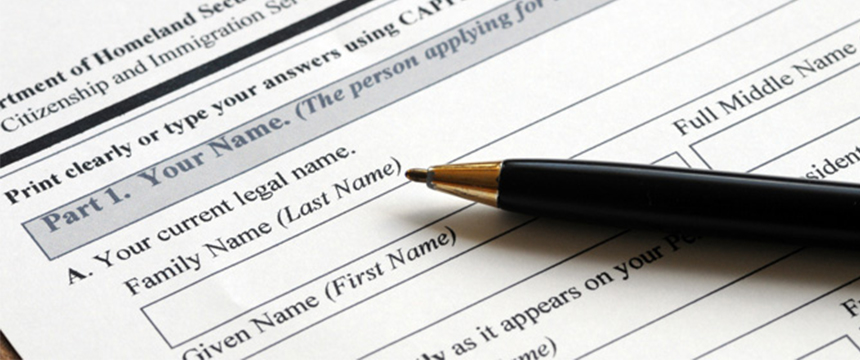Employers Get Ready: I-9 Fine Increases Are Here — and More I-9 Inspections Are on the Horizon

The United States Department of Homeland Security (DHS) recently announced that it will impose higher fines against employers that fail to comply with the complex rules governing Form I-9 (Employment Eligibility Verification). Furthermore, in just a few months, employers may be at a greater risk of receiving a government I-9 inspection. If there is a new administration in Washington, D.C. in 2025, Immigration and Customs Enforcement (ICE), a division of DHS, will return its focus to worksite enforcement, including more I-9 inspections.
Increased Penalties for I-9 Violations
On June 28, 2024, DHS announced the following fine schedule:
- I-9 Paperwork Violations: $281 to $2,789 per Form I-9
- Knowingly Employing Unauthorized Alien (First Offense): $698 to $5,579 per violation
- Knowingly Employing Unauthorized Alien (Second Offense): $5,579 to $13,946 per violation
- Knowingly Employing Unauthorized Alien (Third or More Offense): $8,369 to $27,894 per violation
- E-Verify Employers – Failure to Inform DHS of Continuing Employment Following Final Nonconfirmation: $973 to $1,942 per relevant individual employee
Earlier in 2024, the United States Department of Justice increased the penalties for document abuse and discriminatory practices in addressing I-9 issues. Document abuse usually occurs when an employer asks for specific documents or for more or different documents after the employee already has presented qualifying I-9 documents. The I-9 rules require that the employer allow the employee to choose which document or documents to present from the “I-9 List of Acceptable Documents.” The employer then must review what is presented to confirm whether the document or documents meet the verification requirements. Unfair immigration-related employment practices may occur when an employer treats job applicants and/or new hires differently based upon their immigration status while implementing I-9 procedures or addressing I-9 issues.
Under the DOJ’s new schedule, fines for document abuse and unfair-immigration related employment practices are as follows:
- Document Abuse: $230 to $2,304 per violation
- Unfair Immigration-Related Employment Practices (First Offense): $575 to $4,610 per individual against whom the employer is found to have discriminated
- Unfair Immigration-Related Employment Practices (Second Offense): $4,610 to $11,524 per individual against whom the employer is found to have discriminated
- Unfair Immigration-Related Employment Practices (Third or More Offense): $6,913 to $23,048 per individual against whom the employer is found to have discriminated
Steps to Improve I-9 Compliance
To best defend against the risk of I-9 penalties, employers should review their I-9 procedures, train the employees assigned to handle I-9 compliance, and conduct periodic internal audits. Here a few key compliance tips:
- Use the most recent version of Form I-9 for all new hires and reverifications. The newest I-9 version contains an issuance date of August 1, 2023, and became mandatory as of November 1, 2023.
- For E-Verify employers that wish to rely on I-9 remote document verification, ensure that you qualify to use the remote procedure and that you take the special steps required by this alternative procedure. Only E-Verify employers in “good standing” may use the remote verification procedures. Good standing means that the employer is using the remote verification procedures only at the sites covered by E-Verify and is in compliance with all E-Verify requirements. The employer also must continue to be in good standing each time it uses the alternate remote document verification procedure.
- Do not become complacent if using an electronic I-9 software. A trained Human Resources professional must still carefully complete all I-9 steps, including to review the document presented to confirm it is unexpired and appears genuine on its face, relates to the person who presented it, and is included on the I-9 List of Acceptable Documents. As ICE and the DOJ have reminded employers, I-9 software does not provide a safe harbor. These federal agencies have fined several employers for using flawed I-9 software or for failing to complete the I-9s properly, even though said employers were relying on electronic I-9 software.
- Confirm that the employer holds a compliant Form I-9 for each current employee hired on or after November 7, 1986, and for former employees within the retention period (the longer ofone year after the date of termination or three years after the date of hire). Apart from fraudulent I-9s, missing I-9s constitute the most serious violation.
- Implement procedures to ensure that I-9s are completed within the federally mandated timelines: § 1 (employee’s section) by the first day of employment, § 2 (employer’s section) by the third business day of employment, and Supplement B (reverification section) by the date on which the existing evidence of employment authorization expires. High numbers of late I-9s or significantly late I-9s are very serious violations and lead to higher fines.
- See our earlier posts for additional I-9 compliance tips. Consult with legal counsel for guidance when unsure how to address challenging I-9 questions.
Best Practice: Employers should make I-9 compliance an important part of normal business operations. The I-9 function is a substantive task. Do not treat it as a simple clerical task. Employers must train their employees before allowing them to handle any I-9 compliance duties. An employer’s I-9 compliance program should focus on the time of hire, reverification (if applicable), and periodic internal I-9 audits. Finally, the I-9 compliance efforts should commence well before ICE arrives with the Notice of Inspection.
Please contact your Foley & Lardner LLP labor and employment attorney with questions.
